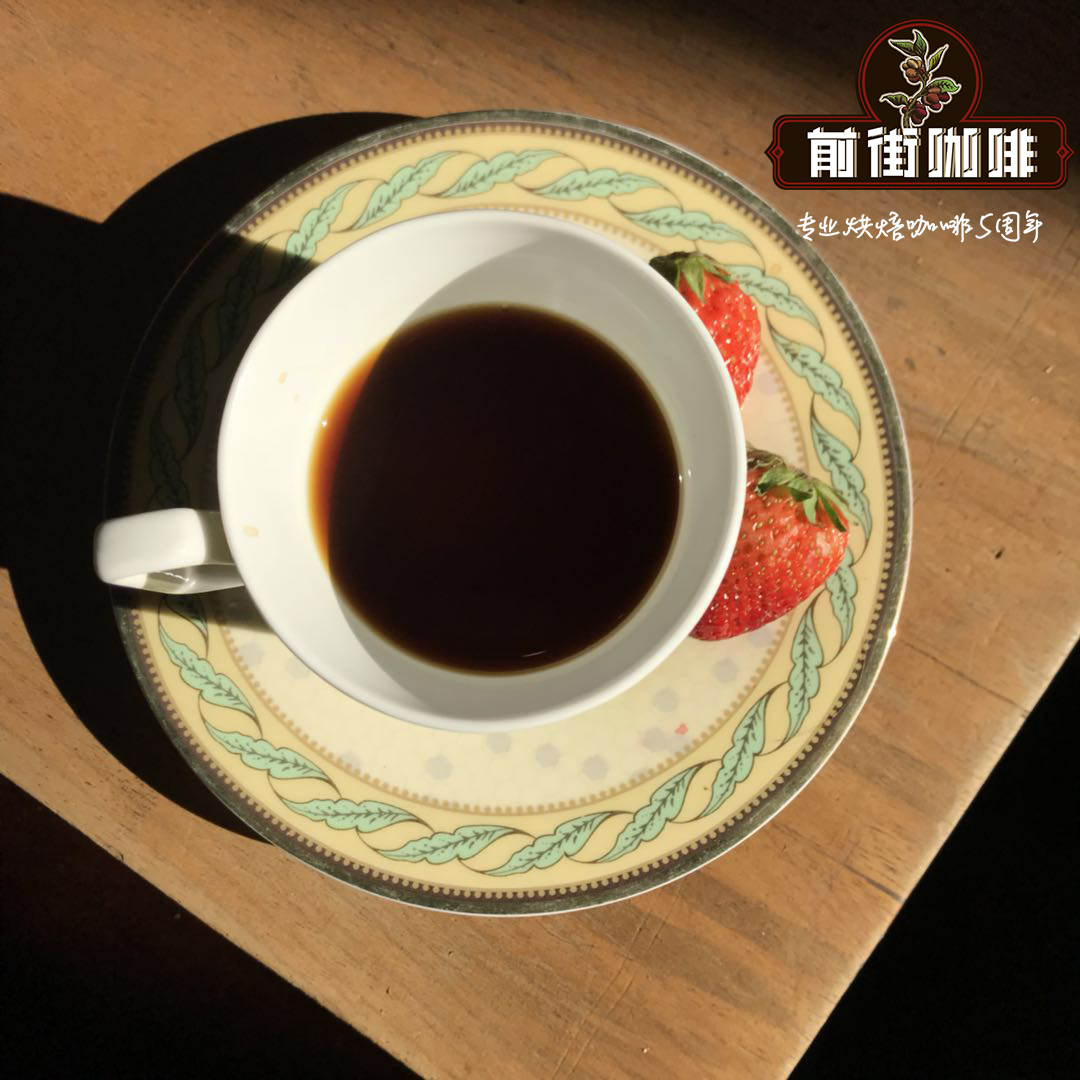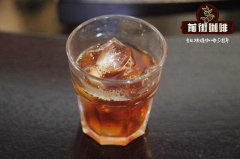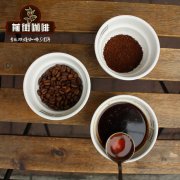Indonesia's delicious coffee brand-Sulawesi coffee bean Toraja Tonaga's planting history? Such as

Professional coffee knowledge exchange more coffee bean information please follow the coffee workshop (Wechat official account cafe_style)
Indonesia's delicious coffee brand-Sulawesi coffee bean Toraja Tonaga's planting history? How to cook Sulawesi coffee beans?
Sulawesi is the fourth largest island in Indonesia, which is shaped like an orchid and very distorted in shape, so Indonesians also call it K Island. Sulawesi in the 13th century, there were two kingdoms: the Elantic Bugis mainly based in the south, and the north-central was the territory of the Catholic Torajas. The two kingdoms were feuded for centuries, but in the 15th century the Portuguese and Spaniards sailed here in search of the spice business. At the beginning of the seventeenth century, the two kingdoms succumbed to the Dutch ship for 300 years.
The Bugis people in the south have a seafaring talent, their fleet is hundreds of years old, and they still have the only sailboat fleet in the world. Makassar (Ujung Pandang), the provincial capital and the main trading port, is still the gateway to eastern Indonesia. Heading north, over the rugged mountains is Tana Toraja, which the locals call "the Land of Heavenly Kings".
Compared with Sumandala, farmers in Toraja Tonaga have a good sense of quality and will pick ripe coffee and cherries for harvest, so the harvest season will be longer. Toraja coffee in Sulawesi is also processed by Giling Basah, coupled with the rich iron ore in Sulawesi and high iron content in the soil, which create this unique flavor of Toraja coffee.
Like many aborigines across Indonesia, Torajas made a living by hunting and raided villages from time to time. Therefore, most of their ethnic groups are located at the top of the mountain and are heavily guarded. Dutch colonists appeased Torajas to set up their own villages in the valley, changing the way they made a living based on agriculture and raising pigs and buffaloes. Torajas's primitive religion was the worship of boulders and animists, and in these primitive practices, various celebrations and funerals still slaughtered a large number of creatures to sacrifice. In the 19th century, Dutch missionaries hijacked the colonists and changed their local beliefs and mother tongues. Today, 60 per cent of Toraja are Christian, only 10 per cent are Muslim, and the rest still believe in local religions.
In recent years, some traders began to import Toraja coffee to Taiwan, and gradually Toraja Coffee Tonaga coffee began to become well-known in the market.
However, most of the knowledge about Toraja is limited to the words Toraja Kalosi Celebes, which makes some stores who use raw beans of Toraja coffee often confused about the definition of price and quality.
Did you buy Toraja, Kalosi, Toraja Kalosi or Celebes?
Here is only a simple explanation: in the past, everyone would commonly known as Toraja Kalosi (Tonagaro). That is because in the past, Toraja Tonaga coffee was harvested by farmers and sold to local middlemen, who then sent it to coffee factories in the so-called Kalosi area for processing, so Toraja coffee is often associated with Kalosi. In fact, Kalosi is mainly a distribution center for raw coffee beans, rather than famous for growing coffee.
So it is almost impossible to know whether the commonly bought Toraja Tonaga beans were harvested from that high-altitude coffee mountain area. In the Toraja area, except for the 50-hectare planting jointly planted by the Forestry Bureau and Toarco Jaya in 2009, most of them are grown by small farmers and then bought by disk dealers, and the so-called large manor model has not been developed. In recent years, the popularity of Toraja coffee has increased greatly, and the production is very small, so some raw bean buyers go straight to the mountains of Toraja to buy coffee beans directly, and slowly Toraja begins to have its own name. A young man from Taiwan, after months of data collection and testing in the Toraja mountains, finally decided to choose the Toraja-Sapan mountain area in the middle of Sulawesi to buy coffee beans. The coffee forest area of Sapan is 1300m above sea level and 1500m above sea level, which is also the most suitable environment for the growth of high-quality Arabica bean coffee forests in Indonesia, with an annual average temperature of about 28-22 degrees.
This place has the best soil quality, the thickness of more than 30 cm layer of rot, the whole is black soil, the coffee here can not only have enough nutrients to grow to large, but also the flavor is excellent! And unlike Toraja Tonaga sold by other traders, we have been in control since coffee farmers harvested cherry fruits and worked with farmers on a semi-contractual basis to harvest absolutely ripe cherries. In general, the process of handling coffee in the Toraja mountain area is quite primitive. After removing the pulp, the pulp is simply washed, and the immature or diseased coffee beans are removed and then directly exposed to the sun for 2 to 3 days. However, there is very little sunshine in the mountains, so most of them are simply dried and bagged for the trader to buy, so most of the Tonaga coffee beans (with shells) commonly seen in the market are extremely damp, and coffee beans are often moldy. In order to avoid this kind of situation, after removing the coffee shell, we immediately pack the bag and send it directly to the sheepskin factory in Rantepao for two to three days before removing the sheepskin, and then send it to Makassar for sun exposure (because the sun temperature in Makassar is very high) and hand-picked grading.
Producing area: Sulawesi-Sapan Mountain area
Characteristics: the appearance color is not easy to darken when baking.
Species: non-Jember species
Qianjie recommended cooking:
Filter cup: KONO filter cup
Water temperature: 88 degrees
Degree of grinding: small Fuji degree of grinding 4
Cooking method: the ratio of water to flour is 1:14, 17g powder, 25g water for the first time, steaming for 30s, and 238g water for the second time. The extraction time is about 2:30 seconds.
Analysis: there are not many ribs at the bottom of the Kono cup, and the filter paper clings to the filter cup to achieve the purpose of limiting air flow, which can make water and coffee powder have longer contact soaking time in the filter cup and ensure the extraction time and extraction rate of rough grinding. In this way, the coffee powder can be fully extracted, enhance the mellow taste and make the taste more concentrated.
Important Notice :
前街咖啡 FrontStreet Coffee has moved to new addredd:
FrontStreet Coffee Address: 315,Donghua East Road,GuangZhou
Tel:020 38364473
- Prev

The planting history of Java coffee beans? What's the coffee story? How to cook Java coffee beans
Professional coffee knowledge exchange more coffee bean information please follow the coffee workshop (Wechat official account cafe_style) Java coffee bean planting history? What's the coffee story? How to cook Java coffee beans? Java coffee was brought to Indonesia by the Dutch in about 1696 and has been cultivated for more than 300 years. West Java province is a first-tier administrative district of Indonesia.
- Next

Which brand of Indonesian coffee is better? What's so special about the treatment of Sulawesi coffee in Indonesia?
Professional coffee knowledge exchange more coffee bean information please follow the coffee workshop (Wechat official account cafe_style) which brand of Indonesian coffee is good? What are the characteristics of the treatment of Indonesian Sulawesi coffee? The Tana Toraja Mountains in southwestern Sulawi, Indonesia (South Sulawesi), 1700 meters above sea level, belong to alpine volcanic terrain and are exposed to the sun.
Related
- Detailed explanation of Jadeite planting Land in Panamanian Jadeite Manor introduction to the grading system of Jadeite competitive bidding, Red bid, Green bid and Rose Summer
- Story of Coffee planting in Brenka region of Costa Rica Stonehenge Manor anaerobic heavy honey treatment of flavor mouth
- What's on the barrel of Blue Mountain Coffee beans?
- Can American coffee also pull flowers? How to use hot American style to pull out a good-looking pattern?
- Can you make a cold extract with coffee beans? What is the right proportion for cold-extracted coffee formula?
- Indonesian PWN Gold Mandrine Coffee Origin Features Flavor How to Chong? Mandolin coffee is American.
- A brief introduction to the flavor characteristics of Brazilian yellow bourbon coffee beans
- What is the effect of different water quality on the flavor of cold-extracted coffee? What kind of water is best for brewing coffee?
- Why do you think of Rose Summer whenever you mention Panamanian coffee?
- Introduction to the characteristics of authentic blue mountain coffee bean producing areas? What is the CIB Coffee Authority in Jamaica?

